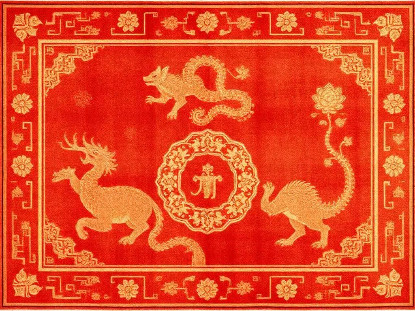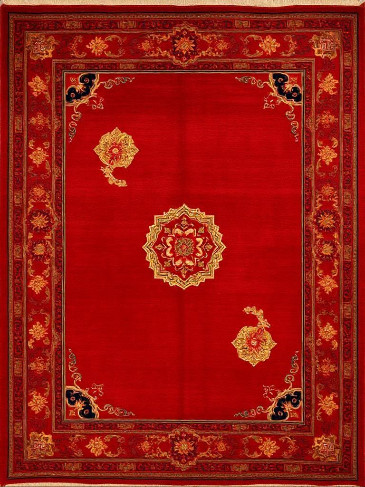Timeless Elegance: Unravel the World of Chinese Rugs
Explore its rich history, symbolic artistry, and masterful craftsmanship that defines traditional and contemporary Chinese rugs, from the imperial looms of Beijing to the serene monasteries of Tibet.

What Are Chinese Rugs?
Chinese rugs are unique in its own accord and they represent a refined tradition of textile artistry stretching back over two thousand years. It is crafted by skilled artisans in regions such as Ningxia, Peking (now known as Beijing), and Tibet. These fabrics are known for their serene palettes, auspicious motifs, and meticulous detail. Mostly are often made from fine wool or pure silk and each piece reflects philosophical, spiritual, and natural themes that are deeply rooted in Chinese culture.
Whether woven for imperial courts, religious temples, or modern homes, Chinese rugs are more than floor coverings—they are cultural statements, symbols of harmony, and living works of art.
Here Are Some Defining Features That Make Chinese Rugs Unique
- It represents ancient symbolism:
Motifs like dragons, phoenixes, peonies, lotus flowers, clouds, and shou (longevity) characters are more than decorative, they’re emblems of protection, prosperity, and balance which flexes the long and rich history of ancient China. - It is made of elegant materials:
Many Chinese rugs are woven from lustrous silk or high-quality wool, lending them a soft texture and radiant sheen. Silk rugs, in particular, are admired for their fineness and are best used in low-traffic areas. - It has a balanced composition focusing on symmetry:
Designs often feature symmetrical layouts and border framing, reflecting Confucian ideals of harmony and order. - Each style is unique according to the regional techniques of the crafters:
Each area has a signature approach—Tibetan rugs are bold and spiritual; Ningxia rugs are subtle and spiritual; Peking rugs are refined and architectural. - Often gives influence and innovation:
While rooted in tradition, Chinese rug making has also embraced international styles—such as French Aubusson—in hybrid designs woven for export and modern interiors.
Each Rug Needs Specialized Care Due To Its Peculiar Qualities
Due to their natural fibers, delicate dyes, and handmade construction, Chinese rugs require expert handling when cleaned. Just one erroneous method done like improper washing can cause bleeding, shrinking, or fiber damage. At Mo’s Rug & More, we treat Chinese rugs with the same respect and skill with which they were created—cleaning them by hand using fiber-safe methods and traditional drying techniques.
Common Types of Chinese Rugs

Peking Rugs
Peking rug examples show traditional Chinese design, and colour contrasts, with intricate patterning and usually symbolic motifs. Made from a high standard wool, with stunning blocks of colour, Peking rugs often require professional cleaning, as well as ongoing care, to maintain the elegance and sophistication of the product, while enhancing the vibrant colours and intricate detailing.

Tibetan Rugs
Tibetan rugs, with their underlying symbolism and connection to their culture and spirituality, are often bold and brash in design. Tibetan rugs are durable, use really good quality wool and carpet construction and likewise are less demanding range in keeping and cleaning, however require special attention from a professional in order to enjoy and keep intact the unique nature of their patterns and quality of wool.
Simple and Easy Steps on How to Care for Your Chinese Rugs
- Vacuum Lightly – Use suction only and avoid rotating brushes, especially on silk.
- Keep Out of Direct Sunlight – Prolonged exposure can fade delicate natural dyes.
- Rotate Periodically – Every 6–12 months helps even out traffic wear.
- Spot Clean Gently – Dab spills with cold water. Always test first.
- Professional Cleaning – Every 1–2 years, particularly for silk, antique, or hand-knotted rugs.
Preserve the Legacy of Your Chinese Rug
Whether you own a Qing Dynasty heirloom or a silk wall-hanging from modern Shanghai, your rug deserves exceptional care. At Mo’s Rug & More, we combine cultural respect with fiber-safe techniques, hand-washing, gentle drying, and dye-safe restoration, to clean your Chinese rug without harming its character or craftsmanship.
